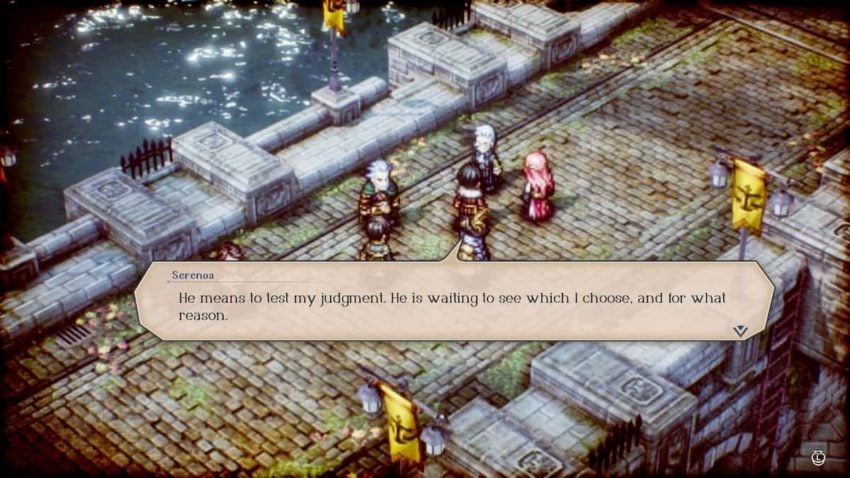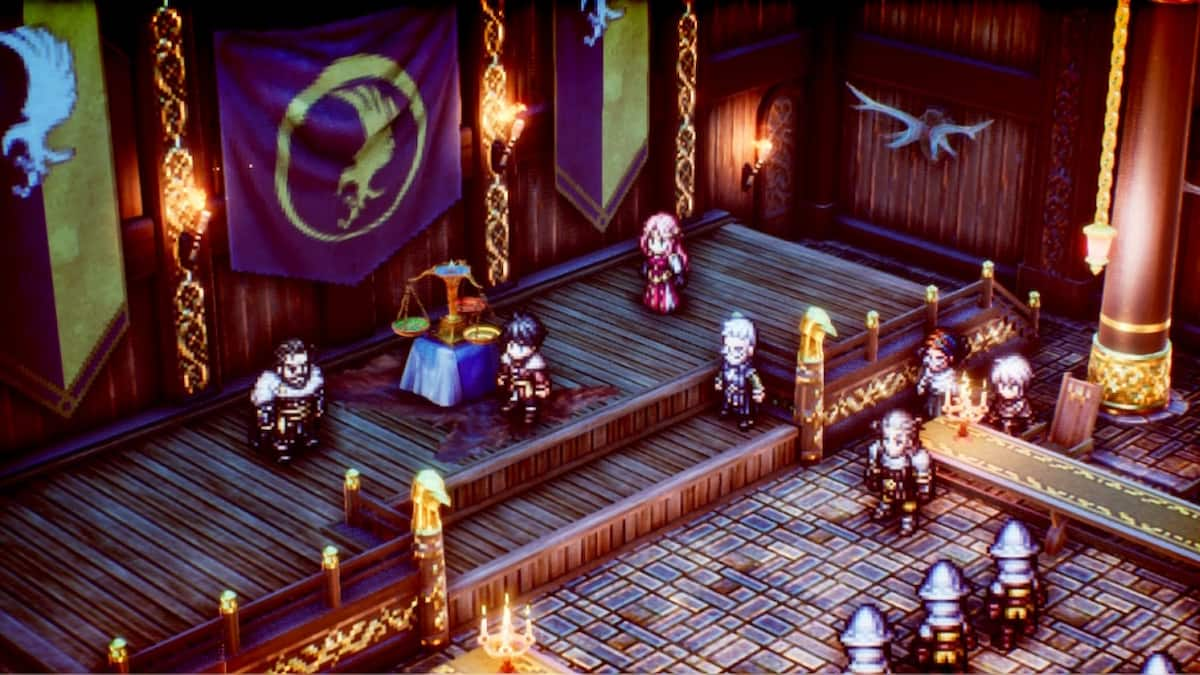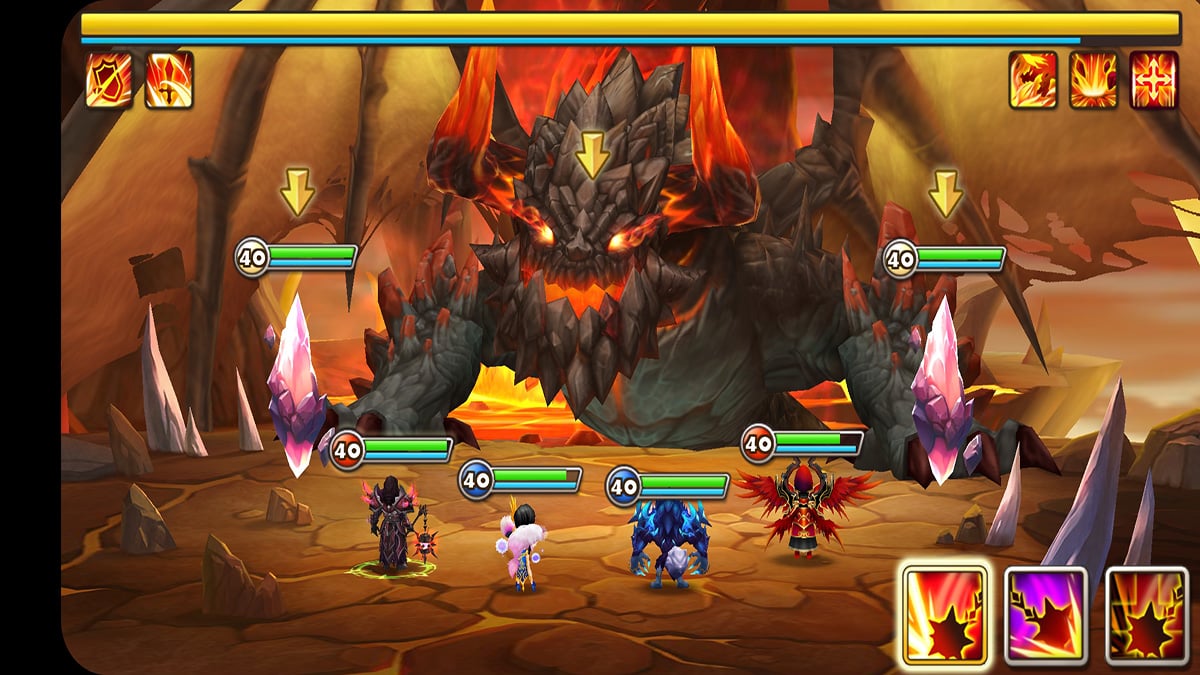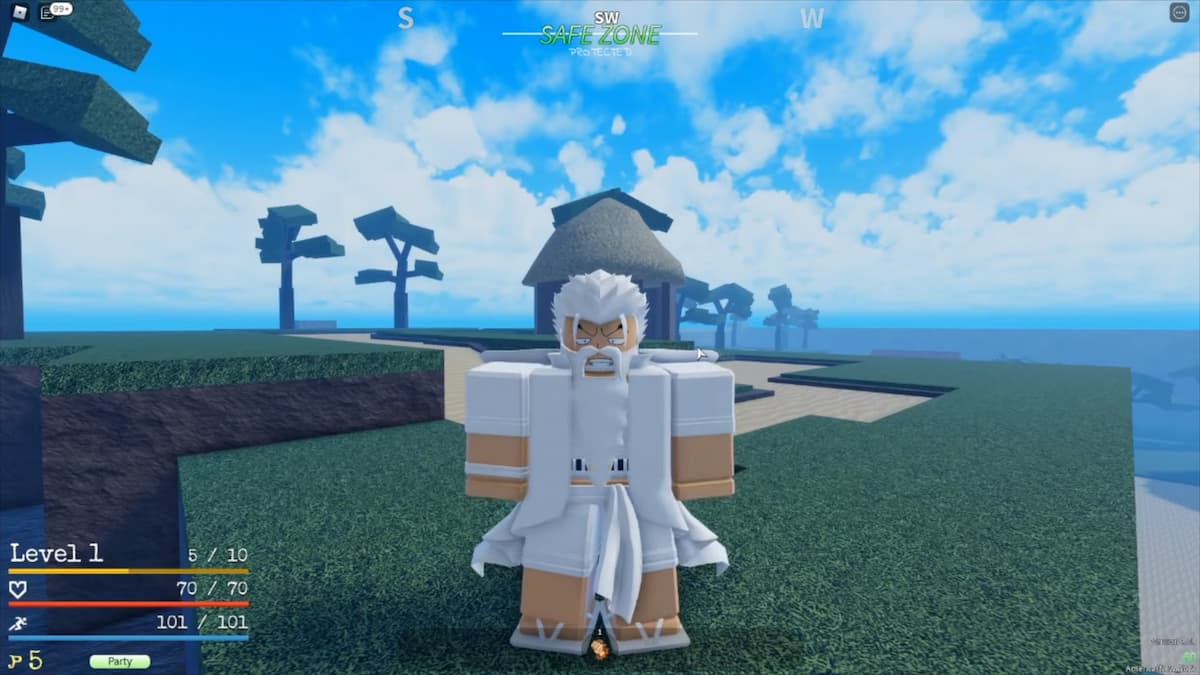Choices are a huge part of Triangle Strategy. The protagonist, Serenoa, will have to make various decisions throughout the course of the story that affect himself and his allies. Having choices in an RPG isn’t anything new, but you’re usually presented with an indication that a choice is good, bad, or neutral; sometimes you can even keep track of your character’s morality. Triangle Strategy does things a little differently in the form of Serenoa’s Conviction. If you’re confused, this guide will clear things up.
Related: Does Triangle Strategy have permadeath?

You’ll be presented with three options when it’s time to make a decision in Triangle Strategy, each strengthening a major conviction: Utility, Morality, and Liberty. When you make your choice, you’ll see a pop-up in the upper right corner telling you that Serenoa’s Conviction has strengthened. What you won’t see is which choice corresponds to which of the three convictions. Serenoa’s personal conviction is shaped by your actions and is kept hidden from you. His conviction will eventually influence which allies will join him.
Choices will be presented to you at major story points but you’ll also be asked to make choices at other times. During exploration segments, you’ll notice some characters have a green exclamation point over their heads; this means you’ll initiate dialogue that results in a choice. Like in the main story, the choices you make here will influence Serenoa’s Conviction.










Published: Mar 5, 2022 3:50 PM UTC